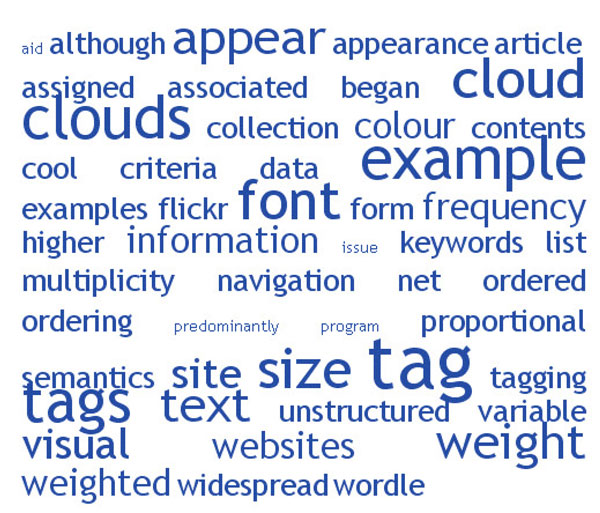KM Conversations—Advanced Discovery Part 1: Classification

Stan Garfield
A knowledge management environment with a well-designed information architecture allows users to discover content by browsing, searching, and subscribing. It should provide efficient access so that people can find and receive useful content at the right time. And it should ensure that important information is discoverable, especially by those who may not know the information even exists.
In this first part of a three-part series, I’ll explain classification, taxonomy, folksonomy, metadata, and tags. There will be a companion free webinar on January 29, 2020 (link at the foot of this post).
To ensure that information can be readily found, it is important to use a standard classification terminology when storing it. Classification involves creating and maintaining a taxonomy that can be used to organize information so it can be readily found through navigation, search, and links between related content.
By defining a taxonomy before beginning to store information in repositories, and then applying the taxonomy through the use of standard metadata and tagging, future problems with inconsistent categories, conflicting and redundant metadata, and difficulty in finding content can be prevented.Examples of taxonomies include the Dewey Decimal System for books and the organization of living things (Kingdom, Phylum, Class, Order, Family, Genus, Species).
A tension exists between the common wish of users to search for information using simple text search and the need of content managers to tag and organize content so that it can located by browsing and searching. Classification of content enables it to be found, read, and understood in the appropriate context. You will need to educate users as to why classification is important to them, how to add metadata when contributing content, and how to use faceted searches (those which use metadata) to more effectively locate information.
Efforts to define an exhaustive taxonomy for an organization can easily become so large and complex that they fail to be completed, implemented, or adopted. A bounded taxonomy for a group within an organization will have a better chance of success. Limit the scope to the key terms that will be used as standard metadata for content classification, and then use this taxonomy for navigation menus, browsing filters, and structured search engines. Give users the option of using free text search, metadata search, navigation, browsing, or a thesaurus.
Metadata defined
Metadata and tags are information about information. They are data fields added to documents, web sites, files, or lists that allow related items to be listed, searched for, navigated to, syndicated, and collected.
Metadata allows information to be found through browsing, searching, and other means. It defines the context of the information, how it is classified within a taxonomy, and how it is related to other information. Metadata may be applied automatically based on the origin of the content, assigned by the content owner when submitting it to a repository, or added by a knowledge manager to ensure it is done properly.
Metadata should be based on the standard taxonomy defined for the organization. It should be embedded in repository entry forms as mandatory fields with pick lists, so that contributed content is correctly classified. Search engines should offer the option to search by the available metadata fields so that results will be as specific as possible.
Examples of metadata are customer name, industry, country, product or service, project identifier, technology type, date, revenue amount, etc. Whenever possible, metadata values should be supplied from a table, rather than entered as free-form text in an input field. The reason for this is that if, for example, each user is allowed to enter the customer name, then there will be many variations, and it will be difficult to search by customer name. If one user enters GM and another enters General Motors, the value of metadata is diminished. Offering a pick list containing the standard customer names will avoid this problem.
Folksonomies defined
A folksonomy is a system in which users apply public tags to online items, typically to aid them in re-finding those items. This can give rise to a classification system based on those tags and their frequencies, in contrast to a taxonomic classification specified by the owners of the content when it is published. Folksonomies, also known as social tagging, are user-defined metadata collections. Users do not deliberately create folksonomies and there is rarely a prescribed purpose, but a folksonomy evolves when many users create or store content and identify what they think the content is about..
Tags are a form of metadata that can be applied by users to help them retrieve content according to their own view of how it should be categorized. Tags can be applied to web pages, documents, people, photos, music, and any other form of electronic content. These tags can also allow others to find content based on a folksonomy. The problem with a folksonomy as opposed to a taxonomy is that there are no imposed standards, and thus inconsistent tags will likely exist for information that should be tagged uniformly.
Tag clouds are visual depictions of user-generated tags attached to online content, typically using color and font size to represent the prominence or frequency of the tags depicted. Here is an example of one:

Read the rest of the series:

Stan Garfield
KM expert, consultant and author Stan Garfield, will be presenting the second in a series of KM Conversations for Lucideaon Wednesday, January 29, 2020 at 11:00 am Pacific, 2:00 pm Eastern—subscribe here to be notified. Stan has compelling information to share, based on his distinguished career as a KM practitioner. Read his posts for our Think Clearly blog, and learn about Inmagic Presto, which has powered the KM initiatives of many organizations.
Similar Posts
Lucidea’s Lens: Knowledge Management Thought Leaders
Part 109 – Dave Snowden
Dave Snowden Founder of The Cynefin Company applies complexity science anthropology and narrative to help organizations make sense of uncertainty and change.
Lucidea’s Lens: Knowledge Management Thought Leaders
Part 108 – George Siemens
In this edition of Lucidea’s Lens Stan Garfield profiles George Siemens—pioneering voice in connectivism and a driving force behind MOOCs and learning analytics—whose work continues to reshape how we understand learning knowledge creation and the role of technology in education and professional development.
Lucidea’s Lens: Knowledge Management Thought Leaders
Part 107 – Arthur Shelley
Explore Arthur Shelley’s insights on leadership co-creation and knowledge strategy through curated works that showcase his expertise in collaboration and innovation.
Lucidea’s Lens: Knowledge Management Thought Leaders Part 106 – Hubert Saint-Onge
As the creator of the Knowledge Assets Framework Hubert has shaped how businesses integrate strategy leadership and knowledge sharing to drive performance.






Leave a Comment
Comments are reviewed and must adhere to our comments policy.
0 Comments